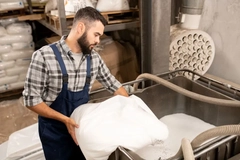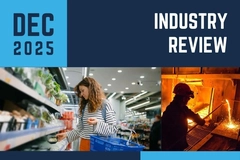Germany’s Reusable Packaging Association on effective glass reuse systems

Glass bottle reuse systems in Germany require collaborative and standardized processes, rather than limiting bottle designs to homogenized shapes, according to André Pietzke, chairman of the Reusable Packaging Association of Germany, a non-profit trade organization that promotes reusable systems across the country.
He notes that simply designing the shape of a glass bottle or jar is often viewed as sufficient for accelerating reuse. However, return, sorting, and cleaning processes are equally significant when creating an effective reuse system.
Packaging Insights speaks to Pietzke about glass reusability in Germany, highlighting the importance of standardized and holistic management across the glass bottle reuse system.
Why is standardizing glass bottles important?
Pietzke: For recycling, it does not matter if glass is standardized, but sorting it into colors helps create a solid stream of glass recycling for producing glass bottles and jars.
To function, glass bottles need to be designed for reuse in terms of being easily cleanable, having secondary packaging that is functional for redelivering, and being returnable through reverse vending machines.
What misconceptions are there about standardization and the reusability of glass bottles?
Pietzke: A common misconception about reuse is that designing the shape of a glass bottle or jar for reusability would be enough. Standardization for reusability is more a standardization of processes.
Return, sorting, and cleaning processes of glass bottles rely on easy processes and clarity for every stakeholder involved. A reuse system works well if everyone involved — from end consumer to cleaner — is informed about what to do with the containers in every cycle phase.
 Glass reuse systems rely on communication from consumer to processors. This is achieved with good management rules, clear responsibility, and a lot of communication during implementation. Reuse is teamwork, and once implemented, it is easy. It can even be cheaper than single-use bottles, and gives used containers (and their material) back value. It’s re-valuing packaging.
Glass reuse systems rely on communication from consumer to processors. This is achieved with good management rules, clear responsibility, and a lot of communication during implementation. Reuse is teamwork, and once implemented, it is easy. It can even be cheaper than single-use bottles, and gives used containers (and their material) back value. It’s re-valuing packaging.
What can you share about the glass bottle recycling and reuse landscape in Germany?
Pietzke: Recycling of glass is the standard for the end-of-life handling of glass containers in Germany. Every reused container is also going into recycling at the end-of-life, but reuse is so much more and adds years of life to the packaging.
Reuse systems expand the lifespan of a container for many cycles. The first standardized bottles were introduced more than 70 years ago. These well-established reuse systems in Germany are organized by many partners who handle the return logistics of beer, juices, milk, yogurt, and water containers.
The reuse system has high return rates and a deposit-driven self-management through important partnerships with retailers and GFGH (Getränke-Fachgroßhandel). Without working in a reuse chain together, nothing would have been possible.
This is why collaboration is always key, and there are many stakeholders who manage parts of these systems and organize certain parts that need special handling, like sorting processes.
What factors can limit a bottle’s reusability?
Pietzke: Besides the “design for reuse” checkbox, the most important reusability factor is the easy process of being returnable in a convenient way, and also having clarity about where the returned bottles and jars are being transported to be sorted, cleaned, and delivered for the next filling. Having every stakeholder informed and good communication between the partners forming the reuse cycle operationally is key.
What challenges persist for implementing standardized bottle shapes?
Pietzke: Recycling is waste management, and reuse is container management. These are two different things, and reuse is always to be chosen over recycling, if it is accessible.
The well-working and established reuse systems in Germany are not implemented through central organizations, and they are working fine, with billions of reuses each year. Since the world has become more complex, it is not that easy to introduce new standardized shapes for reuse.
However, a lot of new solutions are being implemented in Germany. Start-ups are coming up with new solutions that fit the needs of retailers, customers, and producers while being open and accessible to every user in the reuse chain.










